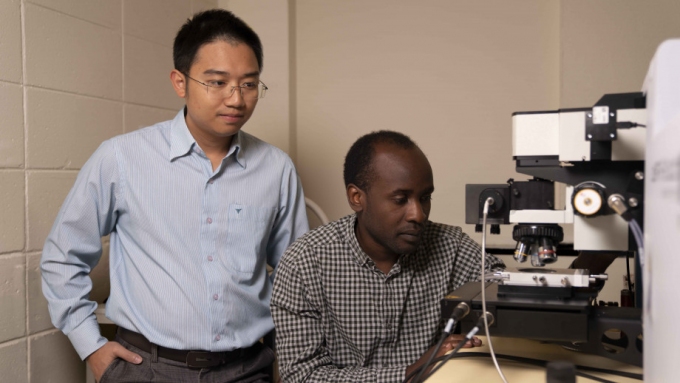A new study from The Australian National University (ANU) shows how the ability of 2D materials to convert sunlight into electricity can be controlled by simply “twisting” the angle between two ultra-thin layers correctly.
The new class of materials (2D) are 100,000 times thinner than a single sheet of paper and could be used in a huge range of technology, including solar cells, LED lights and sensing devices.
However, one material alone has limited applications, so they often come in a pair. Two different 2D materials are stacked together to move positive and negative charges in opposite directions, generating electricity.
Lead author of the report, School of Engineering PhD Research Scholar Mr Mike Tebyetekerwa says it opens up exciting opportunities.
“This study essentially provides a bit of a how-to guide for engineers,” Mr Tebyetekerwa said.
“We’re looking at 2D materials that have just two atom-thin layers stacked together.
“This unique structure and large surface area make them efficient at transferring and converting energy.”
In 2019, Mr Tebyetekerwa and co-author Dr Hieu Nguyen demonstrated the maximum potential of 2D materials to generate electricity using sunlight.
“It’s an exciting new field. Simply twisting the two ultrathin layers can dramatically change the way they work,” Dr Nguyen said.
“The key is to carefully select the matching pair and stack them in a particular way.”
The study has been published in Cell Reports Physical Science.

